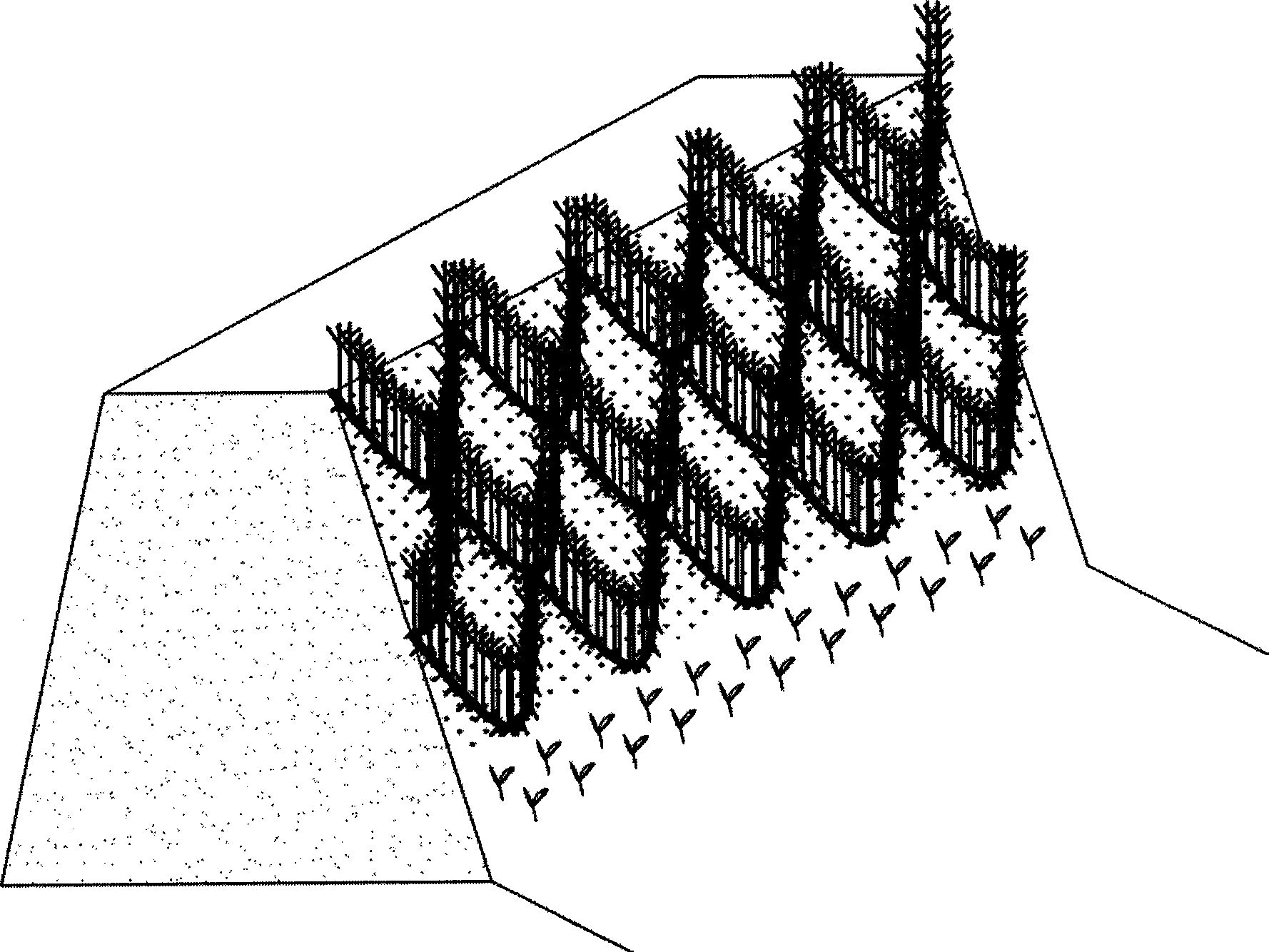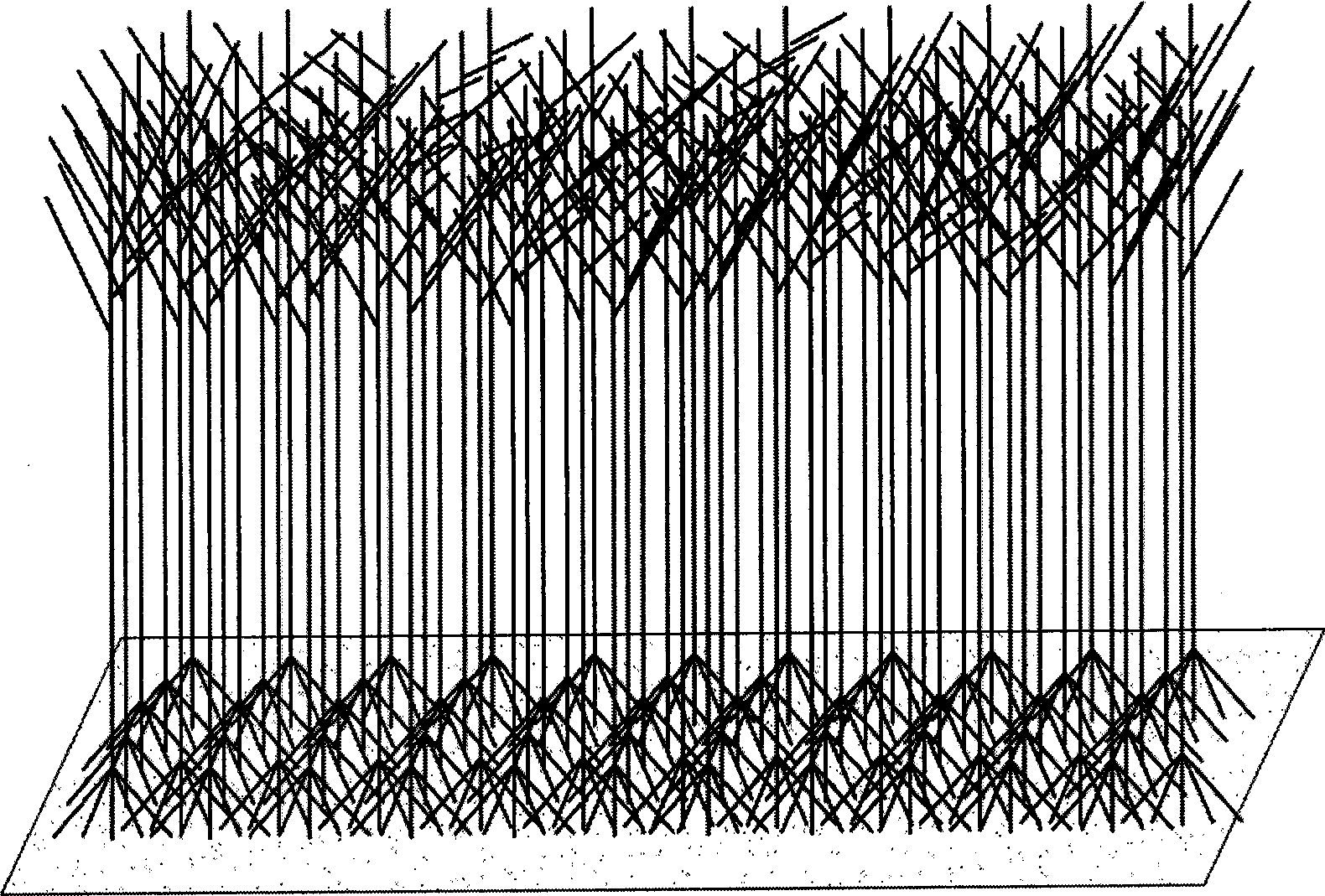Method for protecting quasi ecological lake river bank inclined slope
A technology of embankments and slopes, applied in coastline protection, agriculture, cultivation and other directions, can solve the problems of poor environmental benefits and high costs, and achieve the effects of water and soil conservation, low cost and simple construction
- Summary
- Abstract
- Description
- Claims
- Application Information
AI Technical Summary
Problems solved by technology
Method used
Image
Examples
Embodiment 1
[0016] Such as figure 1 As shown, in the quasi-ecological embankment slope of the lake and river constructed by the present invention, the embankment adopts a combination of embankment and road, the embankment body is a homogeneous earth dam, and the bank revetment is constructed above the paved layer of the river bed. The ditch excavated on the slope is grid-like, the width of the ditch is 30cm-40cm, and the depth is 25cm-30cm. For slopes with sandy soil, the area within the frame formed between the ditches is 3m 2 ~4m 2 , for slopes with cohesive soils, this area can be appropriately increased to 5m 2 ~6m 2 . Such as image 3 As shown, wet plants such as willow and tamarix are planted in each ditch by high-density root system interlaced colonization. Planting adopts the method of transplanting. Wet plants of 60cm--80cm are taken and cut to a height of 50cm. The distance between the plants is 2.5cm-3.0cm. After the roots are interlaced, they are planted in the ditch, co...
Embodiment 2
[0018] Such as figure 2 As shown, the ditch excavated on the slope in this embodiment is in the shape of fish scales. In the ditch, wet plants such as willow and Tamarix are planted in the form of cuttings. The spacing of the wet plants is 1.5cm-2.0cm, and the cuttings are 30cm long. 20cm. The cutting date is from the 10th to the 20th of March. The south of the Yangtze River can be appropriately advanced (March 10), and the north of the Yangtze River can be appropriately postponed (March 20). Plant wet plants into the ditch with high density, cover with soil, water enough, and water again the next day. After the water penetrates into the soil layer, cover with soil as a ridge, and the ridge height is 20cm-30cm. Cut it once in the autumn of the first year. During the period of August 15-20, lightly cut it so that it is 30cm-35cm away from the ground. After the first year, it can be cut twice a year, from March 10th to 15th in early spring or from November 15th to 30th at the...
PUM
| Property | Measurement | Unit |
|---|---|---|
| Width | aaaaa | aaaaa |
| Depth | aaaaa | aaaaa |
| Area | aaaaa | aaaaa |
Abstract
Description
Claims
Application Information
 Login to View More
Login to View More - R&D
- Intellectual Property
- Life Sciences
- Materials
- Tech Scout
- Unparalleled Data Quality
- Higher Quality Content
- 60% Fewer Hallucinations
Browse by: Latest US Patents, China's latest patents, Technical Efficacy Thesaurus, Application Domain, Technology Topic, Popular Technical Reports.
© 2025 PatSnap. All rights reserved.Legal|Privacy policy|Modern Slavery Act Transparency Statement|Sitemap|About US| Contact US: help@patsnap.com



